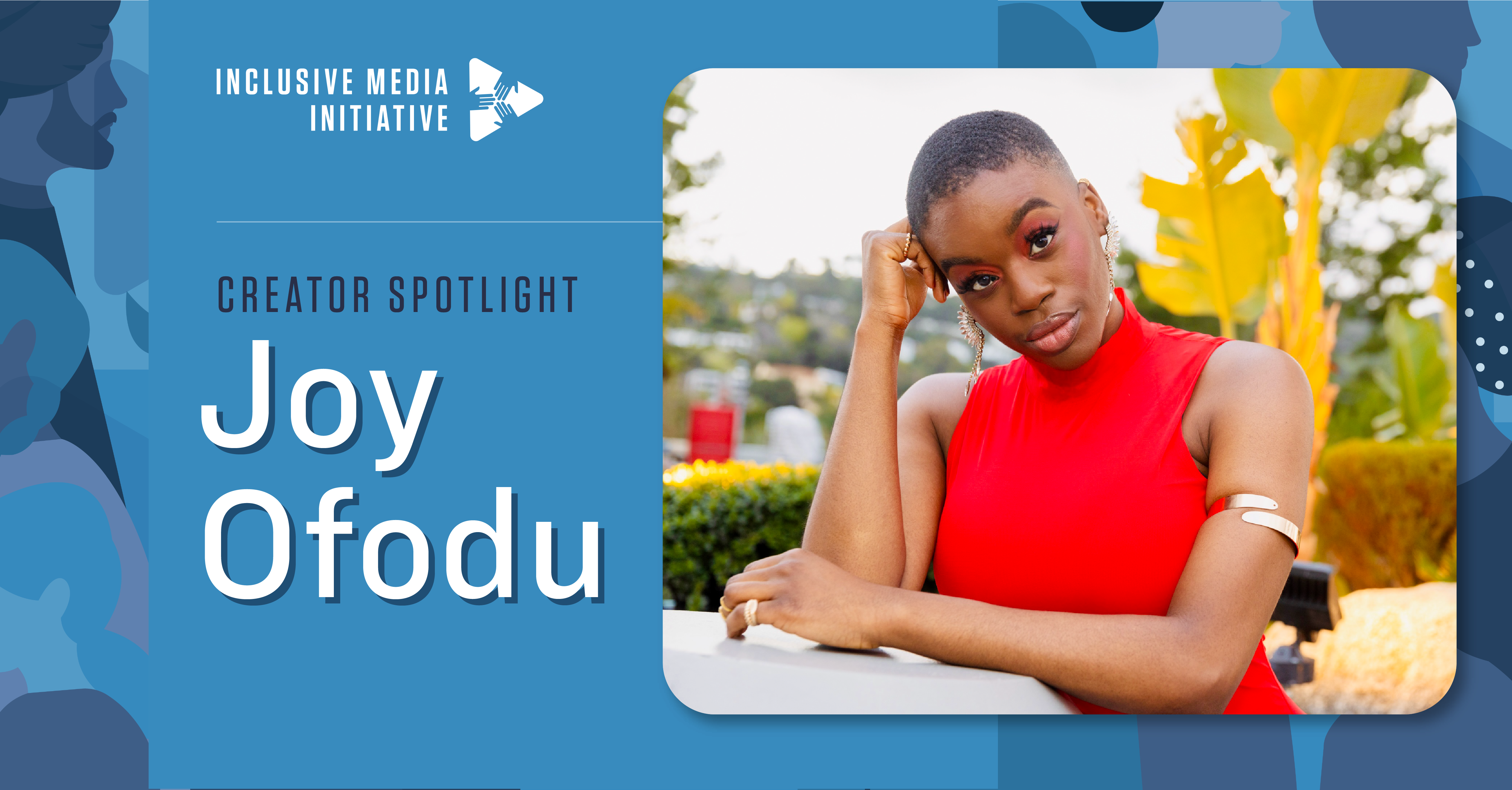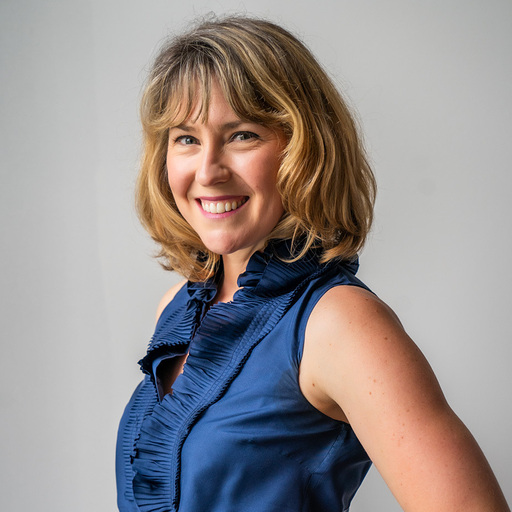
Inclusive Media Initiative Creator Q&A: Joy Ofodu
Photography by Jarrod Anderson | createdbyjarrod.com
Pixability’s Inclusive Media Initiative is our mission to support diverse creators and communities on YouTube. We sat down with one of our creators in the initiative: Joy Ofodu. Check out her YouTube channel here, in addition to her website, Instagram, and TikTok.
Theresa: We’d love to learn a little bit about you and how you got started as a creator.
Joy: I launched the Joy Ofodu brand in 2015. After a few years of tweeting and Instagram, I was inspired to create my blog “From Joy to the World” and share my photography. I blogged about all of my major professional and entertainment experiences as I became that go-to girl for professional portraits in college at USC. I took my talents to red carpets of awards shows and delighted in capturing the entertainers I’d always wanted to be like. When the pandemic hit and I became single (at the same time as launching Reels within Instagram) I saw an opportunity to re-tell my lived experiences as a Black dater, for others’ benefit. I thought “How fun would it be to dream up my future partner out loud and invite the world to do it with me? I might even be more likely to find him, just because everyone knows what I’m looking for.” Sharing wacky, absurd musings like this weekly, I got really good at funny short form video storytelling – enough to get paid thousands to place brands in sponsored content on my growing accounts. Since 2020, @joyofodu has been discoverable on all major platforms, reaching millions of people monthly.
Theresa: Tell us a little bit about your various social media profiles – what types of content do you create and who is your main audience?
Joy: My main audience is people who love to laugh, but particularly women aged 25-45 (a 77%+ majority). I have a mostly US audience but delightful international follower and listenership — I met a super enthusiastic Brazilian fan in France, and amazing women in London who love my comedy and all of it boggled my mind. My target audience arose from my actual audience— I’m happy to keep adapting my content to entertain whoever it’s reaching.
Theresa: What platforms do you create content for? YouTube, TikTok, Instagram, etc?
Joy: You ready? joyofodu.com, datingunsettled.com, Instagram, Snapchat, Podcasts (Apple, Spotify, Amazon etc), YouTube, LinkedIn, Fanbase, Threads, TikTok, X.
Theresa: Tell us a bit about your experience creating content for each platform and if you approach each of these differently?
Joy: My website is my original Joy Ofodu brand baby. That’s where I first admitted to myself and my audience how badly I wanted to work in entertainment. I loosely publish media-rich blog posts detailing my life and projects whenever I feel like it. Dating Unsettled operates similarly in service of my podcast, but I try to keep it simple and let it serve as a landing page for new and returning listeners (Unsettlers). I update it quarterly with events, favorite episodes and photos.
Instagram is my favorite place to share. That’s where my short form videos started taking off and where thousands of people have sent messages affirming me and re-watching my library of content over and over. I post stories of my lifestyle daily, and sketches or entertainment event photos and videos multiple times weekly. I go live whenever I feel like it and respond to DMs and comments daily. My broadcast channel and threads get sporadic foolishness too.
As a Snap Star & Discover publisher, I publish chaotic, 2x weekly unboxings of my favorite products (food, beauty, fashion) on my snap show “Who Needs This” and partner with a lot of brands there. Anyone who wants a free, high quality review of their product has sent it right over to us and we’re still accepting gifting through the spring. I take a silly and strategic approach to publishing the show and stories on @joyofodu. It’s demanding because I want it to really fit snap; I brought in more professionals to edit, too.
I reclaimed my podcast posting schedule for me and just started posting whenever I want with Dating Unsettled. Observing “best practices” on every single platform got old. I realized it doesn’t matter especially when my show already has its own loyal listener community and those listeners love it enough to meet me in person on tour (we’ve done Oakland, London, Brooklyn, LA and a recording in Atlanta).
YouTube is a beast, but I’ve been there for years. I’m approaching it with reinvigorates energy because of shorts. I am super compartmentalized about my voice acting, vlog, comedy and podcasts playlists and what belongs where.
I’m well known for my LinkedIn presence and being a Top Voice. I post several times weekly, host free events for hundreds of other creatives and professionals and will never ever leave. It’s way more fun than it should be for me.
I share to TikTok sporadically. I know what the algo wants but I won’t give it EXACTLY that – I’m proud of resisting the urge to share 5 trendy videos a day and instead return with original thoughts or lifestyle footage. My TikTok videos get me recognized in person when traveling: it’s scary but funny every time.
I’ve been posting on X since Nickelodeon stars actually responded and Rihanna was on the TL clapping back at folks. I love my voice acting community there and rely on it heavily for news. It’s a repository for my random thoughts; there are no pillars there.
Theresa: What do you think about Shorts?
Joy: Shorts are exciting! Across dozens of owned social channels, I need a depressurized place to experiment, like a social playground that’s still generating engagement and value for others AND for me. Shorts is that place. It’s non-monetized, still getting algorithmic distribution, quick to upload and playlist. I like re-posting and testing there. A non-follower once saw my short and booked a facial with my featured esthetician the next day. Shorts has a powerful engine!
Theresa: Why did you decide to join Pixability’s IMI?
Joy: I believe in the mission and we share a vision of an inclusive, equitably invested media landscape. I don’t think I’ll see it during my lifetime, but I know that by joining and listing my channel, by continuing to share on YouTube no matter my audience size or viewership, I’m a part of the change. I’m signaling that I want this future for the underrepresented creators who inherit the Internet.
Theresa: What challenges do you believe IMI can solve for both advertisers and creators?
Joy: I don’t think IMI will totally solve this problem, but what it’s beginning to do is chip away at the fact that a very small percentage of creators receive a majority of advertising investment.
It’s tough as a creator to make a full time living. A study from Aspire cites that only 4.3% of surveyed full-time creators are earning $100,000 annually. When we consider the cost of living in the major cities and areas that prominent creators tend to, this is harrowing.
When I published my paper “How to Ethically Navigate the Black Creator Economy” I suggested that an aggressive form of digital justice would “provide an algorithmic boost to Black creators to balance inequity.” That’s what IMI is doing.
Theresa: What advice do you have for brand advertisers who have yet to try brand advertising directly with creators?
Joy:
- Creative freedom in the brief for the content to look like the creators’ normal content – i.e. mentioning the brand name in the first 3s is an excellent principle for marketing but sucks for a natural-looking video
- Be like Pixability! Invest in underrepresented creators disproportionately to create equity, not equality. If you want to be a justice player, you have to show it in your selection. It’s not actually difficult. The only difficulty you’ll experience or hill to climb is racism.
- Hire repetitively/across several activations and formats for authentic partnership, not just one sponcon endorsement/ad.
- Shorten briefs: a 10 page brief is truly overkill. We can get it in 2!
- Get to know creators before inviting them to campaigns: I love when my partners have followed me or attended my events live and really understand what I share. It helps us save time and money and move faster.
Theresa: When you eval a brand partnership, how do you choose the brand?
Joy: We’re wide open to pitches, especially in entertainment (the same industry I work in as a voice actor), technology, travel, beauty and home decor. These categories get my attention quickly. I tend to choose who to work with based on how they approach me, if I’ve been given enough special consideration or if they’re casting a wide net (not a non-starter, but it will influence my response if I feel like one of many), and if it’s a service that’s familiar or easy to recommend vs. completely unknown to me and my network and something I can’t authentically recommend. I wouldn’t recommend anything I wouldn’t eat, use, or have in my home or on my body if I wasn’t being paid. I also love Black and women-owned brands, small companies I can champion, and cause-contributing companies. I don’t work with brands that would compromise my family-friendly work or work in the childrens’ space – even if I support from afar! My preference is for extended partnerships that activate multiple times across the year, as I’ve done with Meta, Dove, Tampax and Disney.
Theresa: Advice for up and coming BIPOC creators?
Joy: I don’t use or recognize the term BIPOC – I think it oversimplifies and paints our experiences as one.
Once you’ve mastered your organic content strategy, become business savvy! After my Master of Science in Marketing degree, several years leading global marketing campaigns and earning a living as a creator, I launched a free online course with LinkedIn Learning called How to Secure Brand Partnerships – I recommend all Black creators take it. Within it, I speak to specific challenges our community has in asking for the right rates and shouting our aspirations or successes.
Theresa: What’s been the biggest challenge getting started as a content creator?
Joy: Finding the time, which I could only easily find by quitting. Creators represent a wide range of people in different professions, and I was a creative with a different job that was leveraging a lot of my creativity and leaving little left for my content at the end of the day. I knew I needed complete autonomy to realize my full potential in business, so I took a calculated risk and gave myself that autonomy. I had to adapt to the resource and procedural hits to my operations and it took over a year to feel like I can survive for the next 10.
There’s a wide range of influencer pay, and a huge gender and racial pay gap/disparity. I’m so glad that I was once the marketer cutting the checks, so I have a better understanding of what I can charge my clients that’s fair to us both. I’m helping other creators do that now with my online course, and I’m grateful to be surrounded and approached by clients who realize the value I contribute as talent and editor. There will be other challenges I can’t anticipate, but I’m in love with this career path, so I’ll take them all.
Want to learn more about how Pixability’s Inclusive Media Initiative can help you drive intentional media investments that support corporate values and DEI investment goals? Reach out to us today to learn more!
